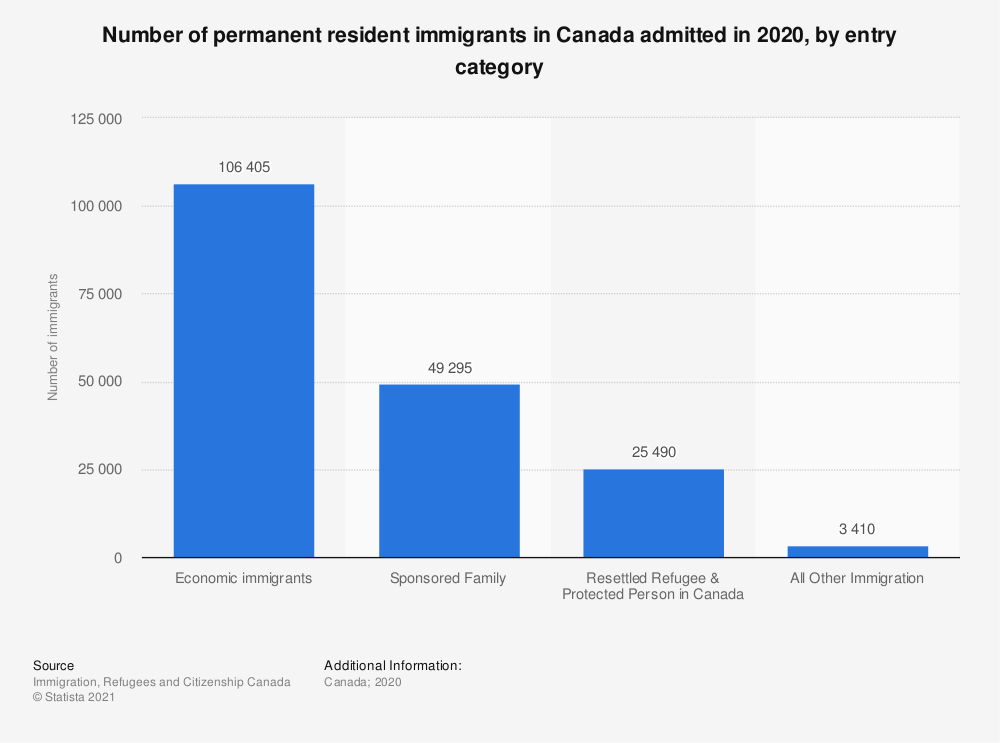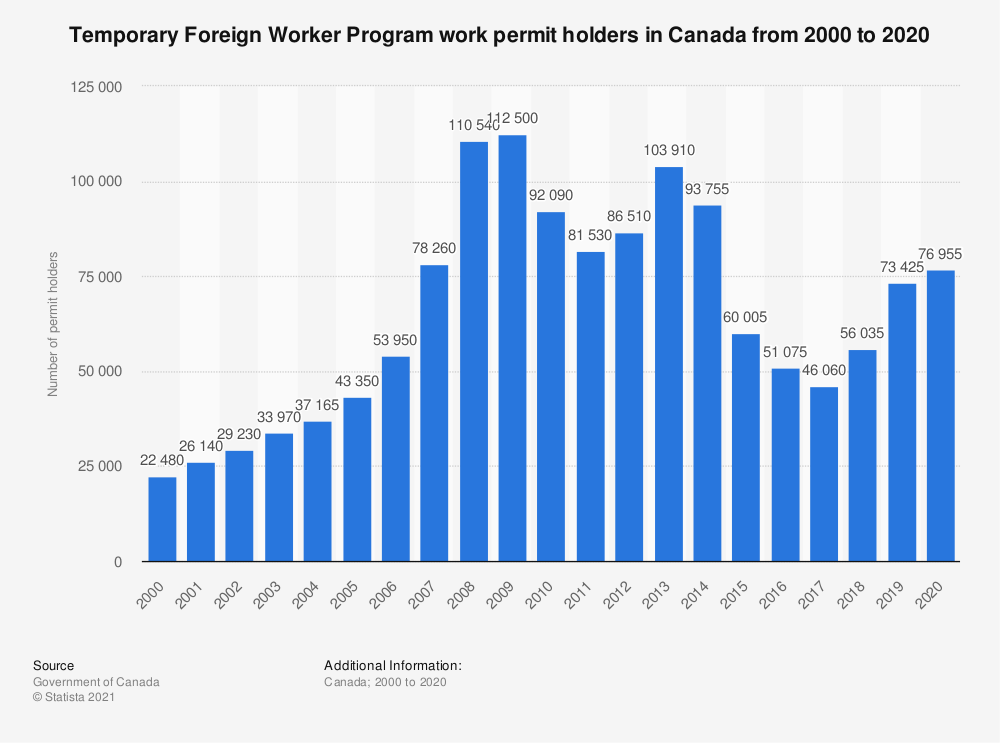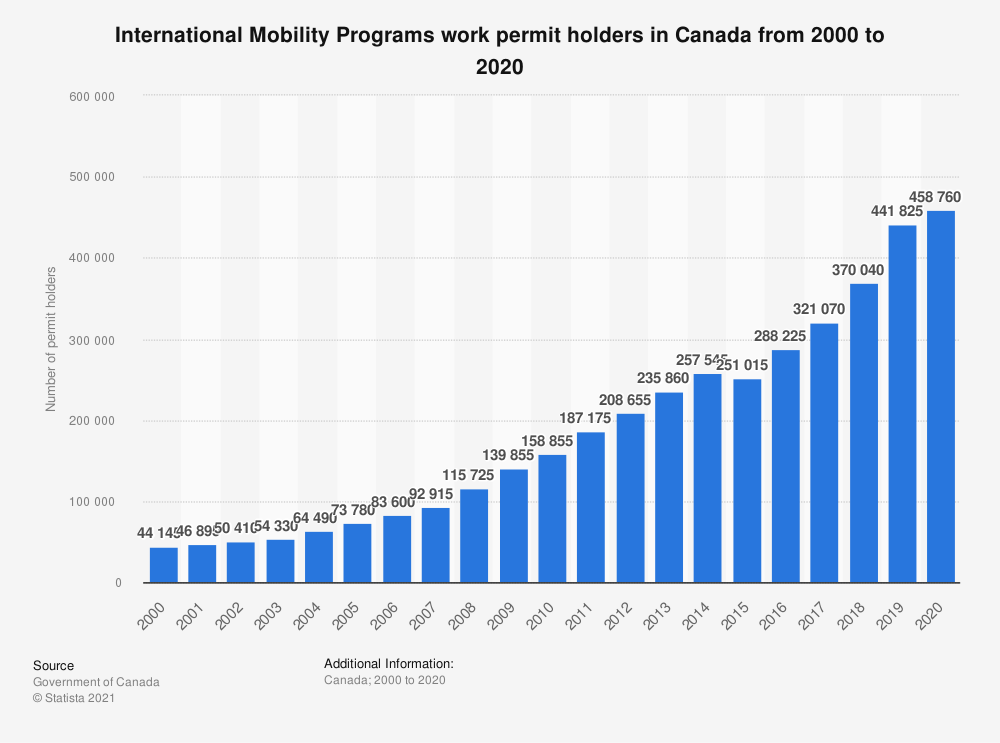Immigration Options for Skilled Workers in Canada
There are many opportunities for skilled and semi-skilled workers to immigrate to Canada. This article will describe them and provide you a roadmap for obtaining additional information about the specific programs that may be of interest to you:
RELATED ARTICLES
Canada seeks new immigrants to be workers, consumers, entrepreneurs, and innovators in its economy. Given Canada’s low fertility rate (1.47 in 2019), its long-term economic stability and prosperity depend on a steady supply of newcomers. Economic immigrants fill gaps in the Canadian workforce, invest in the economy, provide skilled labor, and fuel its economy through their consumption.
According to the 2021-2023 Canada’s Immigration Levels Plan, Canada wants to admit nearly 635,000 economic newcomers in total under federal economic programs and the provincial/territorial nominees pathways over the next three years. Objectives of economic immigration include:
- Filling skill and labour shortages: Canadian immigration programs that prioritize highly skilled workers and university-educated newcomers will result in strong job creation in high-wage sectors, including professional, scientific, and technical services.
- Providing support for an aging workforce: Immigration will help round out the structure of the Canadian workforce, from size to age range to skill sets available.
- Balancing income between newcomers and Canadian citizens: The government carefully manages regulations to ensure that economic immigrants have little to no negative impact on wages for other workers in the country.
Many countries from which immigrants come to Canada also currently face (or will soon face) similar demographic challenges due to waning native-born population and declining fertility rates. As a result, Canada is in competition with these countries for their talented, young citizens. The Canadian government realizes this and therefore tries to keep the country competitive and attractive to young, skilled workers from abroad. Canada offers a range of immigration opportunities both for temporary and permanent residence.
There are three pathways for skilled and semi-skilled workers who want to obtain permanent residence in Canada:
- For persons with skilled-work experience who want to settle in Canada within six months – the Express Entry immigration programs.
- For persons who want to settle and work in a particular Canadian province or territory, except for Quebec – the Provincial Nominee Program.
- For persons who want to settle and work in Quebec – the Quebec Skilled Worker Program.
Express Entry Programs
Since January 2015, skilled foreign workers seeking to immigrate to Canada have been able to use the Express Entry system — the government of Canada’s electronic system for managing “permanent resident” applications filed under various economic immigration programs of the country. The Comprehensive Ranking System (CRS) is the backbone of the Express Entry application management system. CRS is used to determine the ranking order of candidates who apply for immigration through the Express Entry system. The CRS score is based on
- Candidate’s work experience,
- Skills,
- Level of education,
- Language ability,
- Age,
- Adaptability,
- Other “human capital” factors that are predictive of potential success in Canada.
There are three major pathways for skilled workers under Express Entry:
- The Federal Skilled Worker Program is for skilled employees with foreign work experience in professional, managerial, or technical fields, who want to immigrate to Canada permanently.
- The Federal Skilled Trades Program is for skilled tradespersons who wish to become permanent residents and are qualified in a skilled trade.
- The Canadian Experience Class is designed for skilled employees who have previously worked in Canada and now wish to become permanent residents. This program is often used to transition from temporary resident status to permanent status.

Provincial Nominee Program
All Canadian provinces and territories, except for Quebec and Nunavut, have launched their own skilled worker programs for immigrants who want to live and settle in a particular Canadian province. These programs are operated under the scope of the Provincial Nominee Program. The PNP is for workers who:
- Have the skills, education, and work experience to contribute to the economy of a specific province or territory;
- Want to live in that specific province or territory; and
- Want to become permanent residents of Canada.
PNP follows a very specific two-stage process for granting Canadian permanent resident status to economic immigrants. In the first stage, a potential immigrant applies for a Provincial or Territorial Nomination (to be considered for the second stage). A person must apply directly to the immigration authority of the province or territory of his or her choosing.
Then, successful applicants are selected by the province or territory. These applicants are awarded a Provincial Nomination (PN), which means this person is recommended for immigration to Canada’s federal government and can apply for permanent residence.
Please note that an applicant can apply for PN only in one province or territory at a time.
One of the most common questions applicants ask is: “What are the differences between Express Entry and the Provincial Nominee Program?” and “Which is the best?”
In some ways, these programs are interconnected, since one method of applying for the PNP is through the Express Entry system. To learn more about this topic, please read our article on comparisons between Express Entry and PNP.
Peculiarities of Quebec’s Programs
Quebec, a mainly French-speaking province, manages its own immigration programs. Its selection process differs from other provinces. If you want to settle in Quebec and get permanent residence there, you must apply under the Regular Skilled Worker Program. It is also called the Quebec Skilled Worker Program. This program has a three-stage application process:
- You must submit your Expression of Interest form via the Quebec e-portal. It will be placed in the Expression of Interest bank. From this bank, persons whose profiles correspond to Québec’s needs and who have good potential for integration are invited to submit an Application for Permanent Selection.
- Once you have received an invitation, you must fill out and submit the Application for Permanent Selection to the Quebec Ministry of Immigration, Francisation, and Integration. If your application is successful you will be issued a Quebec Selection Certificate (QSC).
- After receiving your QSC, you must continue your immigration process with the Government of Canada. This means that you must submit your new permanent residence application to Immigration, Refugees, and Citizenship Canada (IRCC), the authority responsible for immigration at the federal level.
Other Options for Obtaining Permanent Resident Status in Canada
If you consider immigrating to one of the provinces of Atlantic Canada (New Brunswick, New Scotia, Newfoundland and Labrador, and Prince Edward Island) you may apply for permanent residence under the Atlantic Immigration Pilot (AIP). This is an immigration program developed to help Atlantic Canadian Employers hire high-skilled and semi-skilled workers. The AIP has two streams for foreign employees who have a valid job offer in Atlantic Canada. Each stream has different eligibility requirements:
- Atlantic High-Skilled Program: This option is for persons who worked at least 30 hours per week in the last three years and have work experience in an occupation included in the skill level 0, A, or B of Canada's National Occupational Classification (NOC). These levels cover management, professional (usually requires a university degree), technical/skilled (usually requires a college diploma or training as an apprentice) jobs. Please note that you must have a job offer for such a job for at least a one-year duration.
- Atlantic Intermediate-Skilled Program: This option is for persons who worked at least 30 hours per week in the last three years and have work experience in an occupation included in skill level C of Canada’s National Occupation Classification. This level covers intermediate jobs that usually call for high school and/or job-specific training, such as industrial butchers, truck drivers, or food servers. Please note that your Canadian job must be permanent (not limited in time).
Candidates must also meet a set of general requirements. To become eligible, they must:
- Successfully take the English or French language test;
- Provide proof of funds that they have enough money to support themselves and their family members who come to Canada;
- Have a Canadian certificate, diploma, or degree, or a foreign degree, diploma, or certificate with an Educational Credential Assessment (ECA).
If you are interested in these options, contact us, and our team can provide you with a comprehensive and realistic analysis of your chances and offer the best possible way for you to become a permanent resident of Canada.
Temporary immigration programs help Canadian businesses attract people with the talent they need for a short duration of a few years. There are many programs in Canada for temporary workers. You must get a Canadian Work Permit (WP) to legally work in Canada. A WP by itself will not grant you entry into Canada, but you will be automatically issued a Visitor's Visa or an Electronic Travel Authorization (eTA) at the port of entry when you arrive in Canada with a WP.
There are three main programs for persons who want to perform temporary work in Canada:
- Temporary Foreign Worker Program (TFWP): This program is for persons who need authorization to work in Canada only for a specific employer. The TFWP grants an Employer-Specific Work Permit. There are seven separate streams under this program: for academics, for agricultural workers, for in-home caregivers, etc.
- International Mobility Program (IMP): This program is for workers who want the freedom to work for any employer in Canada for a specified period. The IMP grants an Open Work Permit.
- International Experience Canada (IEC): This program offers youth from certain countries the opportunity to travel and work in Canada. This program is based on reciprocal, bilateral agreements between Canada and other states. It consists of three streams that offer either Open or Employer-Specific Work Permits.
The TFWP typically admits fewer foreign workers to Canada than the IMP and was created so that Canadian employers could hire foreign talent when no Canadian worker could fill the job vacancy. It is mainly used to admit seasonal agricultural workers to Canada but also covers other sectors.
You should read our article on obtaining a Work Permit in Canada to learn more about other pathways for a WP.

The real picture of Canadian economic immigration is observed during pre-COVID times (see on the right).
Additionally, in late October 2020, the Canadian government announced the most ambitious immigration targets in Canadian history — to welcome at least 401,000 new immigrants in 2021, 108,500 of which would enter via Express Entry programs.


Canada broke its previous Express Entry record in the first quarter of 2021. Some 44,124 skilled and semi-skilled workers were selected under various Express Entry Programs, the largest numbers since EE was launched in 2015. In the second quarter of 2021, Canada broke this record again! Canada has invited 44,591 immigration candidates to apply for permanent residence through the Express Entry system. As of June 30, Immigration, Refugees, and Citizenship Canada had issued a total of 88,715 Invitations to Apply (ITAs) for permanent residence, smashing previous records.
Such figures are in line with the proclaimed goal of the Canadian government to welcome 401,000 newcomers in 2021.
Similar trends are seen with Temporary Work Permits. Canada is trying to overcome the negative effects of the COVID-19 pandemic on immigration and fill gaps in the workforce. Additionally, the Canadian government is proposing major changes aimed at introducing stricter rules for employers and more protections for employees, in order to improve the working conditions for potential newcomers.
Immigration to Canada can be rather complicated. Contact us, and our team of professionals will help you navigate in the process of moving to Canada. We will review your background and provide you with a realistic assessment of your chances of success. If you decide to pursue one or more immigration programs, we can manage your application and all related tasks.
The importance of providing clear, complete, and accurate information throughout the process cannot be overstated. It is usually a good idea to seek the assistance of a professional who is experienced in the process so that you avoid making mistakes or acting on incorrect information at any step. We can assist you in all stages of your journey for Canadian residence as well as make the application process efficient and stress-free.
If you are unsure about your likelihood of success, contact us for a free evaluation. If you still have any other questions that are not addressed in this article, please contact us and we will be happy to help.

